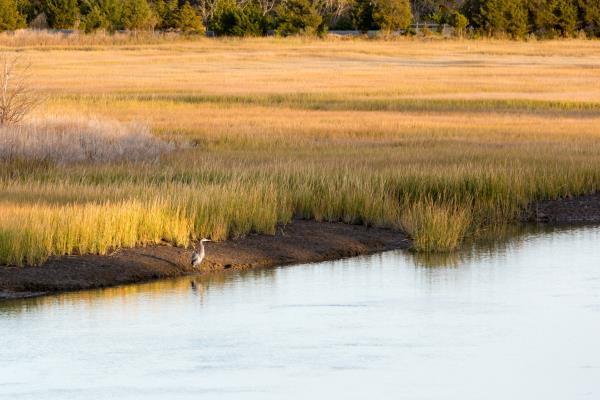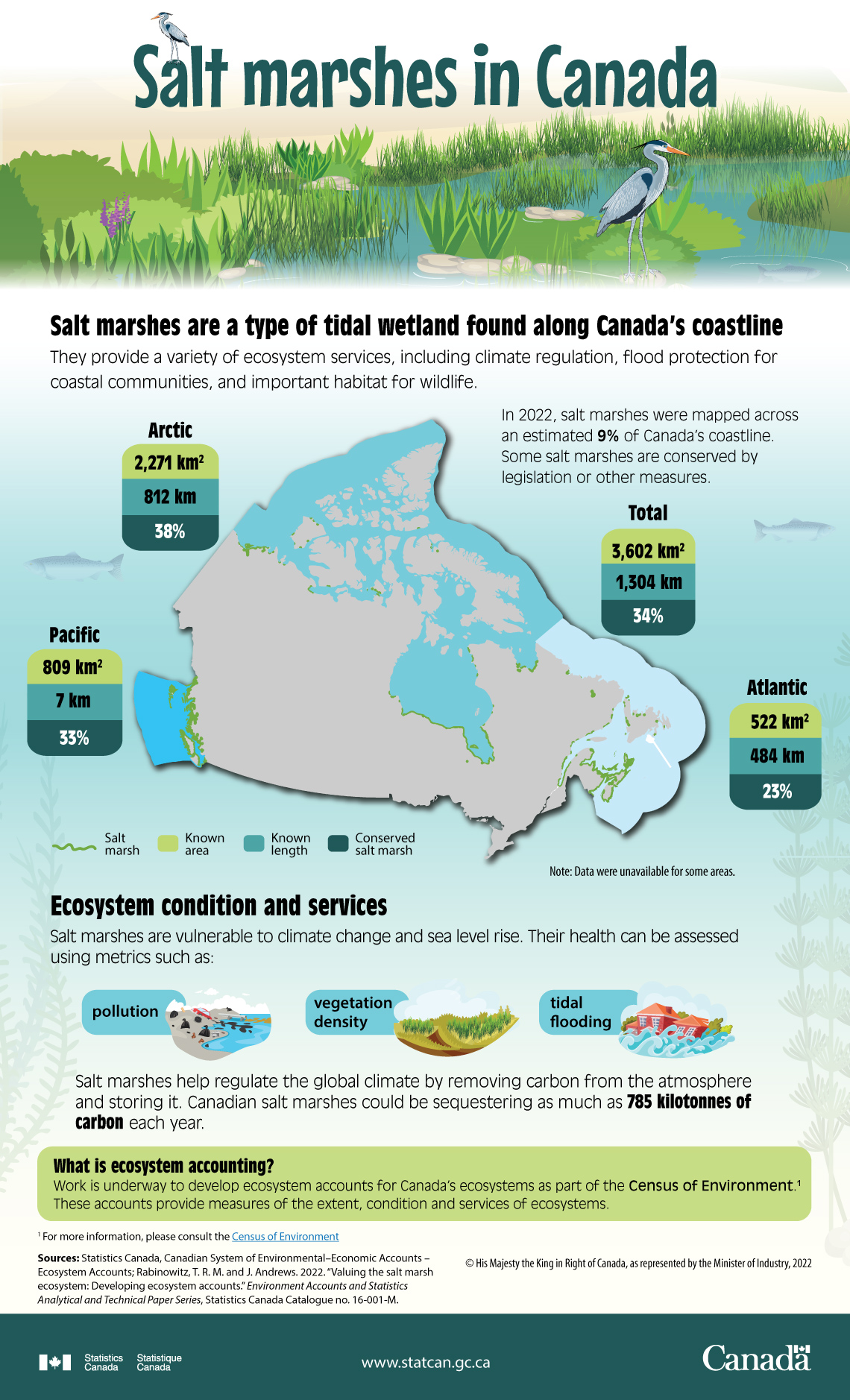
This infographic showcases selected data from the salt marsh ecosystems accounts, which provides a foundation for the development of salt marsh ecosystem accounts and will serve as guidance for the further development of coastal and ocean ecosystem accounts as part of the Census of Environment. These accounts will measure ecosystem extent, condition and services and follow the internationally accepted environmental accounting standard.

Description - Salt Marshes in Canada
Salt marshes are a type of tidal wetland found along Canada’s coastline
They provide a variety of ecosystem services, including climate regulation, flood protection for coastal communities, and important habitat for wildlife.
In 2022, salt marshes were mapped across an estimated 9% of Canada's coastline. Some salt marshes are conserved by legislation or other measures.
| Ocean | Known area | Known length | Conserved salt marsh |
|---|---|---|---|
| km2 | km | percentage | |
| Pacific | 809 | 7 | 33 |
| Arctic | 2,271 | 812 | 38 |
| Atlantic | 522 | 484 | 23 |
| Total | 3,602 | 1,304 | 34 |
| Note: Data were unavailable for some areas. |
Ecosystem condition and services
Salt marshes are vulnerable to climate change and sea level rise. Their health can be assessed using metrics such as:
- pollution
- vegetation density
- tidal flooding
Salt marshes help regulate the global climate by removing carbon from the atmosphere and storing it. Canadian salt marshes could be sequestering as much as 785 kilotonnes of carbon each year.
What is ecosystem accounting?
Work is underway to develop ecosystem accounts for Canada’s ecosystems as part of the Census of Environment.Note1 These accounts provide measures of the extent, condition and services of ecosystems.
Sources: Statistics Canada, Canadian System of Environmental–Economic Accounts – Ecosystem Accounts; Rabinowitz, T. R. M. and J. Andrews. 2022. “Valuing the salt marsh ecosystem: Developing ecosystem accounts,” Environment Accounts and Statistics Analytical and Technical Paper Series, Statistics Canada Catalogue no. 16-001-M.
Notes
- Footnote 1.
-
For more information, please consult the Census of Environment
Contact information
For more information, or to enquire about the concepts, methods or data quality of this release, contact us (toll-free 1-800-263-1136; 514-283-8300; infostats@statcan.gc.ca) or Media Relations (statcan.mediahotline-ligneinfomedias.statcan@statcan.gc.ca).